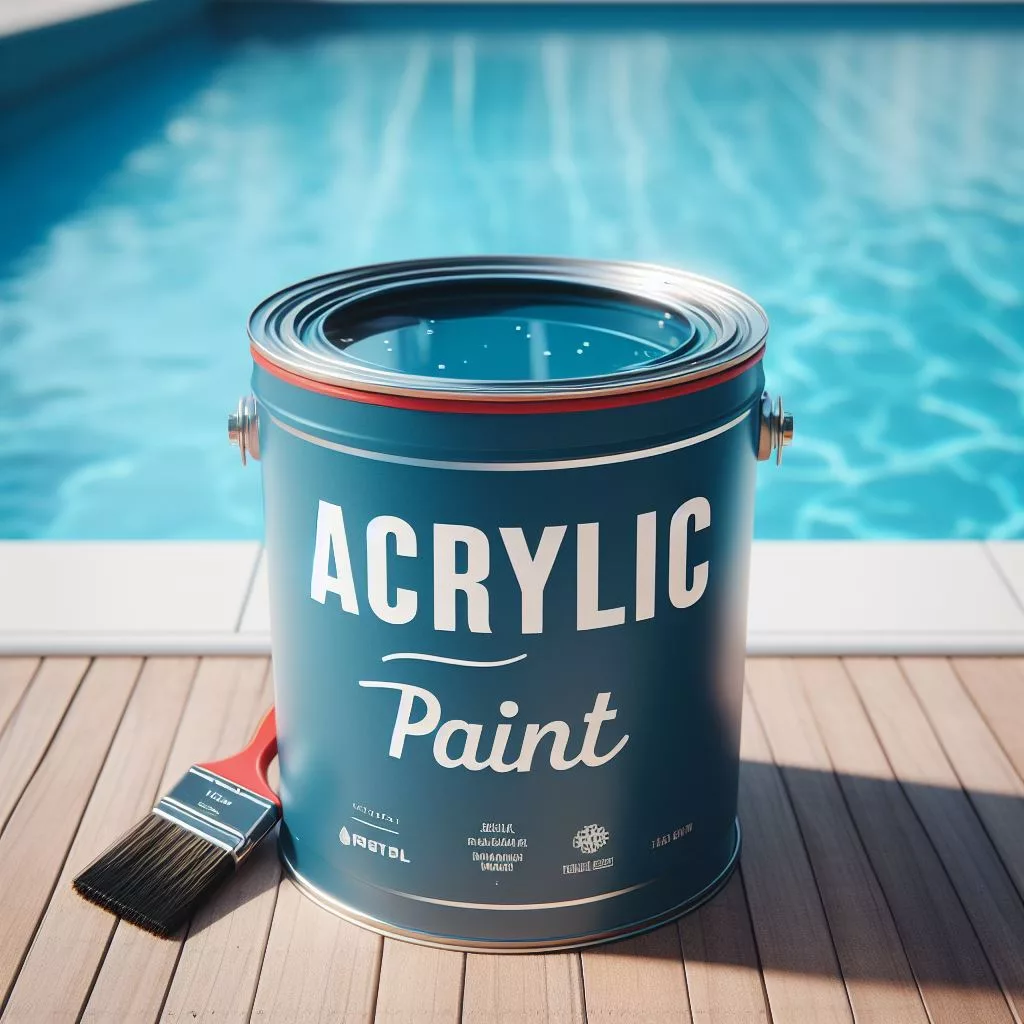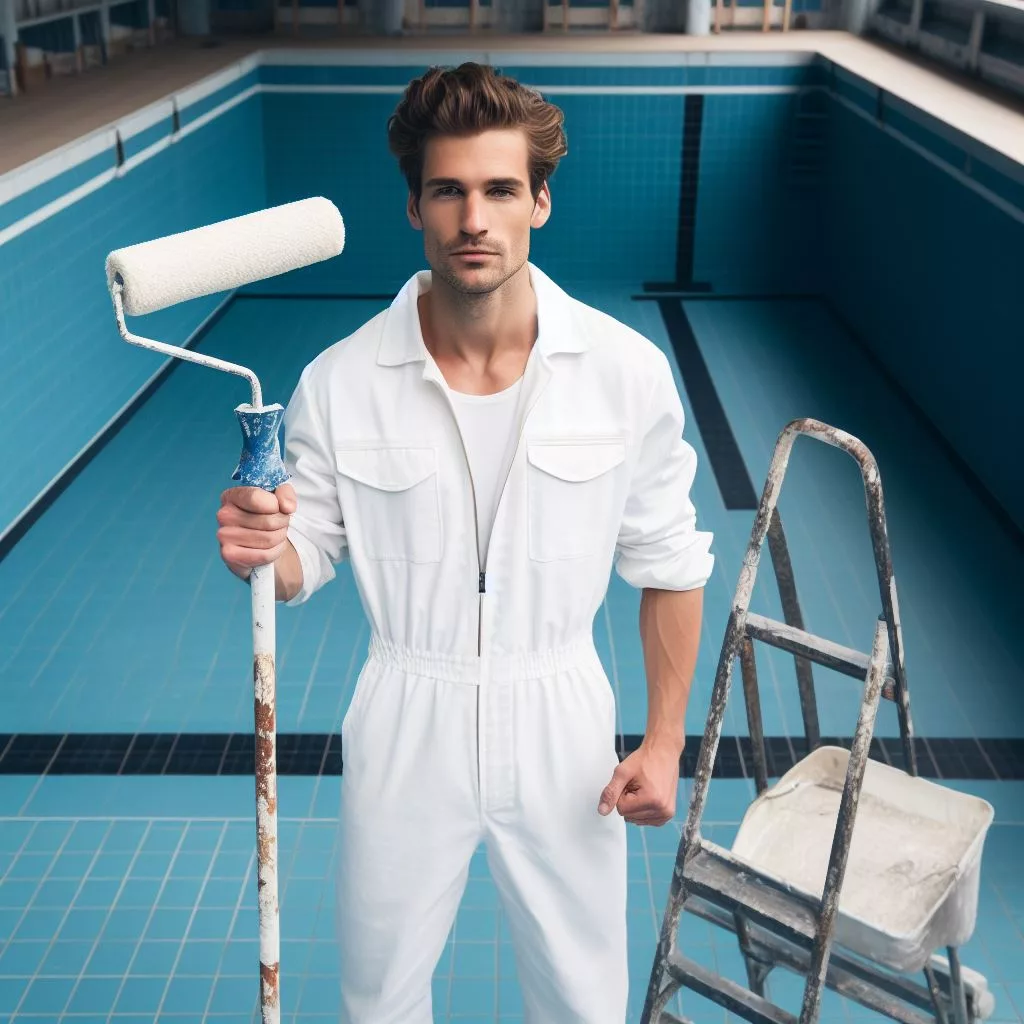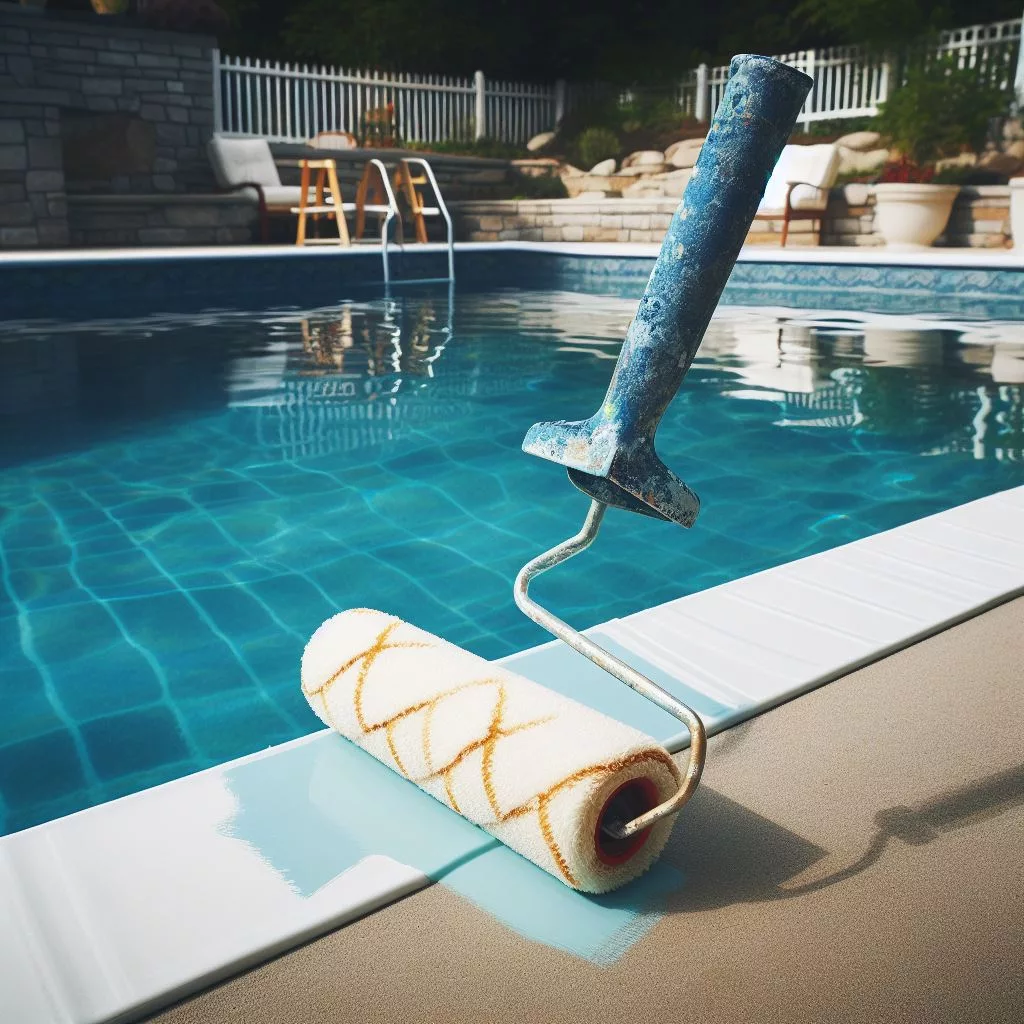
When it comes to refreshing the look of your inground pool, acrylic pool paint is a versatile choice that offers a range of advantages. In this guide, we’ll delve into the world of acrylic pool paint, discussing important considerations and the options available to help you make an informed decision for your pool renovation project.
Understanding Acrylic Pool Paint
Acrylic pool paint is a popular choice for rejuvenating your pool’s appearance. It is a water-based paint known for its ease of use and versatility. Unlike other pool paint options, such as epoxy or chlorinated rubber, acrylic paint does not require harsh solvents for cleaning or thinning. It is user-friendly, making it a great choice for DIY enthusiasts. It dries relatively quickly, allowing for a faster turnaround on your pool project. Additionally, it comes in a wide range of colors and finishes, giving you the freedom to choose a look that complements your outdoor space.
Types of Acrylic Pool Paint
Acrylic pool paint comes in different varieties, each tailored to specific requirements. These include:
Standard Acrylic: This is the most commonly used acrylic pool paint, suitable for most applications.
Premium Acrylic: Premium options offer enhanced durability and a longer lifespan, making them a great choice for high-traffic pools or those in challenging environments.
Specialized Acrylic: Some acrylic pool paints are formulated for unique circumstances. For example, there are acrylic paints designed for underwater use, ideal for touch-ups or small repairs without draining the pool.

Factors to Consider Before Painting
Pool Surface Condition
Before embarking on your pool painting project, it’s crucial to assess the current condition of your pool’s surface. If you notice significant damage, cracks, or uneven areas, it’s essential to address structural issues before proceeding with the painting process. Acrylic paint can enhance the appearance of your pool, but it cannot serve as a remedy for underlying structural problems. Ensuring that your pool’s structure is sound is the first step in achieving a successful and long-lasting finish.
Proper Preparation
Adequate preparation is the cornerstone of a successful pool paint job. To begin, it’s important to thoroughly clean the pool’s surface, removing any debris, algae, and contaminants. Pay special attention to any cracks or imperfections, as these should be patched and smoothed out. Additionally, consider etching the surface to create a rough texture that promotes better adhesion of the paint. The cleaner and smoother the canvas, the more effectively the acrylic pool paint will bond and provide a professional-looking finish.
Choosing the Right Paint
While acrylic paint is an excellent choice, it’s worth noting that there are various options available. When selecting the appropriate paint for your project, you can opt for standard acrylic pool paint, premium formulations, or specialized types designed to meet specific needs, such as underwater paints. Your choice should align with the specific requirements of your pool and the aesthetic you want to achieve. Exploring the available options and selecting the one that best suits your project is an important consideration before you begin your pool painting endeavor.
Acrylic paint gives you the flexibility to choose the color and finish that best suits your style and complements your outdoor space. You can find acrylic paint in a spectrum of colors, from classic blues to vibrant reds, greens, and more. Additionally, you can select from various finishes, including glossy, semi-gloss, or matte, depending on your aesthetic preferences.
Application Techniques
Surface Preparation
Proper surface preparation is the foundation of a successful acrylic pool paint project. To start, ensure that your pool’s surface is clean, free of debris, and in good repair. This means removing any loose or peeling paint, scrubbing away dirt and algae, and addressing any cracks or imperfections. Creating a smooth and well-prepared canvas is crucial for the paint to adhere effectively and ensure a professional finish.
Choosing the Right Tools
Investing in the right tools is a key aspect of achieving a high-quality result when working with acrylic pool paint. High-quality brushes, rollers, and paint trays designed specifically for water-based paints are essential. These tools not only make the application process more efficient but also help in achieving a smoother and more even coat of paint. Using the proper equipment ensures that the paint adheres properly and looks its best.
Applying the Paint
The process of applying acrylic pool paint is a critical step that can greatly affect the final result. Following the manufacturer’s instructions for the specific acrylic pool paint you’ve chosen is vital. Typically, you’ll need to apply multiple coats of paint, allowing each layer to dry before adding the next. This layering approach ensures that the paint is evenly distributed and creates a strong, durable finish. Patience in this phase is key to a successful outcome.
Curing
After applying the paint, allowing it to cure is essential for ensuring a strong bond with the surface. Curing time can vary depending on the specific acrylic pool paint you’ve used, so it’s important to follow the manufacturer’s recommendations. During this period, it’s best to keep the pool area clear and undisturbed to avoid any potential damage to the freshly applied paint. Curing is the final step in the process, ensuring that your pool’s new finish is robust and long-lasting.

Maintenance and Durability
To keep your paint looking its best and maximize its lifespan, consider the following maintenance tips:
Pool Paint Maintenance: Regularly brush and vacuum your pool to remove debris and prevent algae growth. Maintain proper water chemistry by regularly testing and adjusting pool chemicals. Avoid abrasive cleaning tools and harsh chemicals that can damage the paint. Consider periodic touch-ups or repainting as needed to maintain the pool’s appearance.
Prolonging Pool Paint Durability: Cover your pool when not in use to minimize exposure to UV rays and chemicals. Be cautious when using pool equipment, as dragging or dropping items can chip or damage the paint. Periodically inspect the paint for signs of wear and tear and address any issues promptly.
Caring for Pool Paint: Keep a record of the paint type and application date for future reference. Consult with pool professionals or manufacturers for specific care and maintenance recommendations.
Other Considerations
Budget
Acrylic pool paint is often a cost-effective solution compared to more extensive pool renovations. While the initial investment may vary based on the size of your pool and the type of acrylic paint you choose, it can provide a fresh, updated look without breaking the bank. Consider budget-friendly options without compromising on quality.
Environmental and Health
Acrylic pool paint is water-based, making it a more environmentally friendly choice compared to solvent-based paints. Dispose of paint waste according to local regulations and avoid allowing paint to enter storm drains or bodies of water.
Use proper safety gear when handling acrylic pool paint, including gloves and eye protection. Ensure good ventilation when painting to avoid inhaling fumes. Store and dispose of paint and related materials responsibly.
With these considerations in mind, you can transform your inground pool, giving it a fresh and inviting look that you’ll enjoy for years to come.
Conclusion
Exploring acrylic pool paint options and considerations is the first step toward a successful pool painting project. By understanding the benefits of acrylic pool paint, assessing your pool’s needs, and following proper application and maintenance practices, you can get the best result for your project.
If you’re interested in other finish options, explore aquaBRIGHT™ and polyFIBRO® coatings. They are more protective and durable than pool paint finishes and have a wide selection of color options for you to choose from. You can find local ecoFINISH installers right here on our website.
